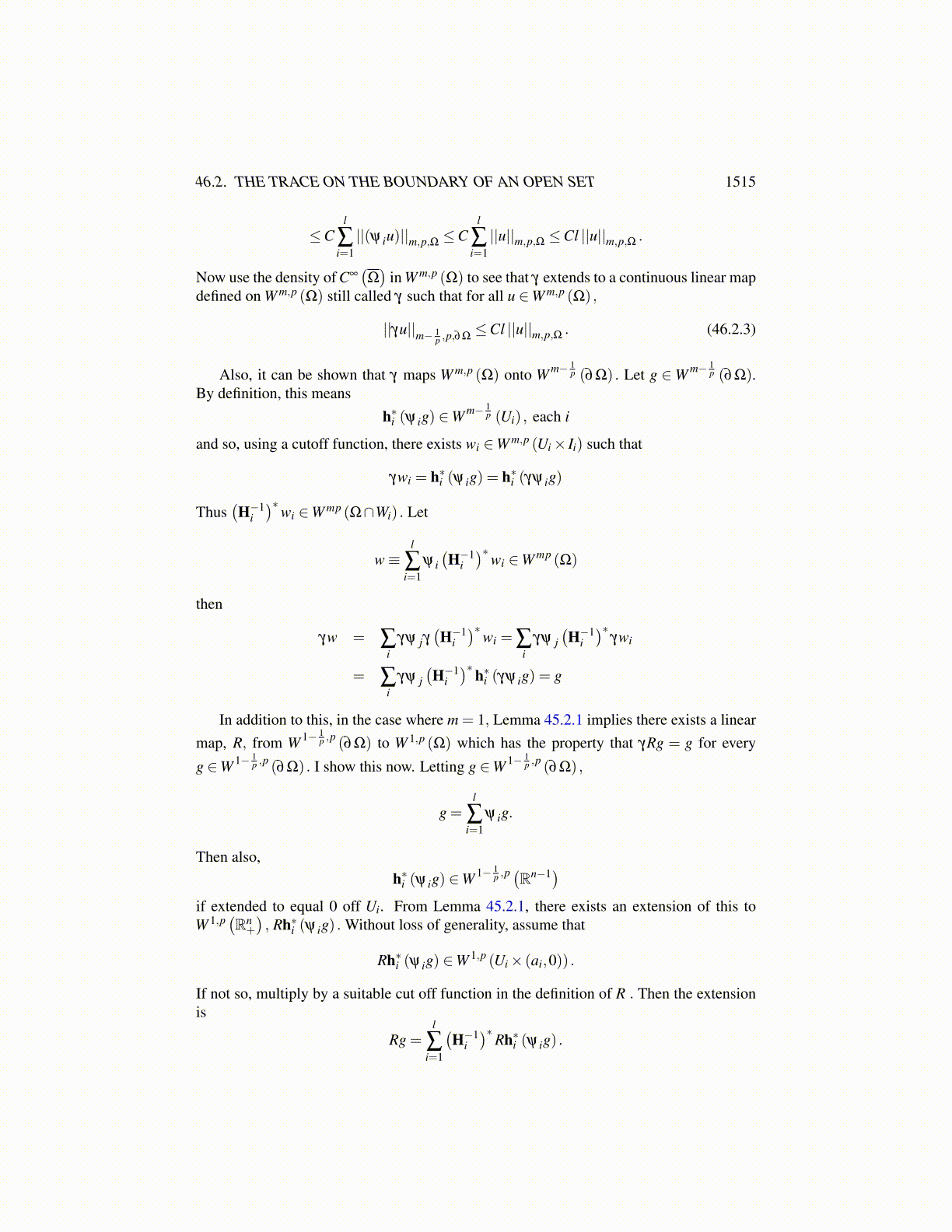
46.2. THE TRACE ON THE BOUNDARY OF AN OPEN SET 1515
and
||u||2,hs,p,Γ ≡∑j,i
∣∣∣∣∣∣h∗i (uφ jψ i
)∣∣∣∣∣∣s,p,Ui
= ∑j,i
∣∣∣∣∣∣h∗i (uφ jψ i
)∣∣∣∣∣∣s,p,h−1
i
(Wi∩W ′j
)But from the assumptions on h and g, in particular the assumption that these are restrictionsof functions which are defined on open subsets of Rm which have Lipschitz derivativesup to order k along with their inverses, Theorem 45.4.4 implies, there exist constants Ci,independent of u such that∣∣∣∣∣∣h∗i (uφ jψ i
)∣∣∣∣∣∣s,p,h−1
i
(Wi∩W ′j
) ≤C1
∣∣∣∣∣∣g∗j (uφ jψ i
)∣∣∣∣∣∣s,p,g−1
j
(Wi∩W ′j
)and ∣∣∣∣∣∣g∗j (uφ jψ i
)∣∣∣∣∣∣s,p,g−1
j
(Wi∩W ′j
) ≤C2
∣∣∣∣∣∣h∗i (uφ jψ i
)∣∣∣∣∣∣s,p,h−1
i
(Wi∩W ′j
) .Therefore, the two norms, ||·||1,gs,p,Γ and ||·||2,hs,p,Γ are equivalent. It follows that the norms,
||·||2s,p,Γ and ||·||1s,p,Γ are equivalent. This proves the following theorem.
Theorem 46.1.3 Let Γ be described above. Then any two norms for W s,p (Γ) as in Defini-tion 38.6.3 are equivalent.
46.2 The Trace On The Boundary Of An Open SetNext is a generalization of earlier theorems about the loss of 1
p derivatives on the boundary.
Definition 46.2.1 Define
Rn−1k ≡ {x ∈ Rn : xk = 0} , x̂k ≡ (x1, · · · ,xk−1,0,xk+1, · · · ,xn) .
An open set, Ω is Cm,1 if there exist open sets, Wi, i = 0,1, · · · , l such that
Ω = ∪li=0Wi
with W0 ⊆Ω, open sets Ui ⊆Rn−1k for some k, and open intervals, (ai,bi) containing 0 such
that for i≥ 1,
∂Ω∩Wi = {x̂k +φ i (x̂k)ek : x̂k ∈Ui} ,
Ω∩Wi = {x̂k +(φ i (x̂k)+ xk)ek : (x̂k,xk) ∈Ui× Ii} ,
where φ i is Lipschitz with partial derivatives up to order m also Lipschitz. Here Ii = (ai,0)or (0,bi) . The case of (ai,0) is shown in the picture.